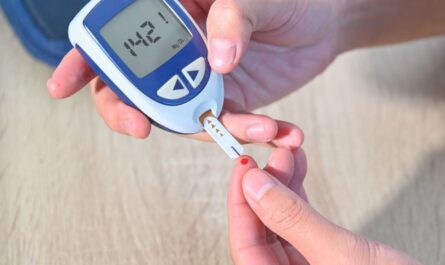Portable X-Ray Devices: Revolutionizing Medical Diagnosis
Portable x-ray devices have emerged as a revolutionary technology in the medical field. Unlike traditional stationary x-ray machines that require patients to visit diagnostic centers or hospitals, portable x-ray devices can be brought to the patient’s location. This allows for timely diagnosis and treatment in various settings outside of hospitals. Let us take a deeper look at how portable x-ray devices are transforming healthcare.
Mobile Diagnosis
One of the key advantages of portable x-ray devices is their mobility. X-ray technologists and radiologists can take these lightweight and compact machines anywhere they are needed—whether in ambulances, at accident sites, or in patients’ homes. This enables rapid on-site diagnosis and treatment without the delay of transporting patients. Portable x-ray machines are regularly used by EMTs and paramedics to image suspected fractures and internal injuries during emergencies and assess patients before transferring them to hospitals. They are also helpful for bedridden and homebound patients who cannot travel for conventional x-rays. The mobility of these machines ensures patients receive prompt medical attention right where they are.
Technology Advancements
Over the past decade, there have been significant technological improvements that have enabled the development of portable x-ray devices. Miniaturization of components has allowed the substantial downsizing of traditional floor-mounted x-ray systems into portable packages weighing around 30 pounds. Advanced digital x-ray detectors that instantly capture and transmit images wirelessly have replaced bulky photostimulable phosphor image plates. Batteries have become more powerful to support full examination capabilities away from electrical outlets. Newer portable x-ray machines also feature brighter x-ray tubes, high-resolution imaging detectors, and modern ergonomic designs for ease of use in any setting. All these advancements have transformed bulky, fixed systems into highly functional portable diagnostic tools.
Expanding Applications
Thanks to their versatility, portable x-ray devices are finding increasing application beyond emergency medicine. Sports physicians frequently use them to examine athletes for fractures and soft tissue injuries on-field or on-court without disturbing their game schedules. Dental and veterinary professionals also rely on compact digital x-ray units to perform imaging in their clinics and homes. Some care facilities for elderly or disabled patients have installed mini C-arms in their premises to get x-rays done near patient beds. Even large healthcare camps in remote rural areas have found portable x-rays very helpful. Their convenience has opened up diagnostic possibilities in non-traditional environments and expanded access to millions worldwide.
Improving Patient Outcomes
By facilitating speedy diagnosis, portable x-ray devices are playing a key role in improving patient outcomes. Quick identification of fractures allows for prompt stabilization and treatment to prevent further complications. Early detection of lung conditions aids in fast triage and management. For infectious cases, portable digital radiography enables rapid diagnosis and isolation precautions during patient transport. In emergency trauma, timely whole body x-rays help identify life-threatening injuries upfront and guide critical interventions. Faster medical decisions due to portable diagnostics may also cut down hospital stays and long-term disabilities. Overall, the impact of portable x-ray technology in achieving better clinical management and optimizing health outcomes is immense.
Future Prospects
Going forward, portable x-ray systems are expected to become even more compact, intelligent and integrated with other modalities. Newer wireless technologies may allow imaging data from these units to be seamlessly transferred to radiology workstations for remote analysis. Machine learning incorporated into portable x-ray devices may enable automated diagnosis support and standardization of image quality. Some analysts predict the development of miniature C-arms that can be hand-carried into ambulatory vehicles. Integration of portable ultrasound and bone densitometry may provide multi-modality diagnosis capability on a single portable unit. There is also scope to make these systems affordable through innovative financing models to expand global access. Undoubtedly, portable x-ray devices will continue revolutionizing healthcare delivery as technology marches ahead.
In summary, portable x-ray machines have hugely benefited patients and clinicians through their mobility and ability to deliver diagnostic imaging outside of hospitals. Technological progress continues to make these systems more advanced, versatile and integrated with changing needs. By facilitating timely diagnosis anywhere, portable x-rays are playing a pivotal role in clinical management and improving outcomes worldwide. With further technological innovations, they promise to transform population health through expanded diagnostic access across diverse community settings. Overall, portable digital radiography exemplifies how medical advances can empower better patient-centric care.
Note:
1. Source: Coherent Market Insights, Public sources, Desk research
2. We have leveraged AI tools to mine information and compile it



